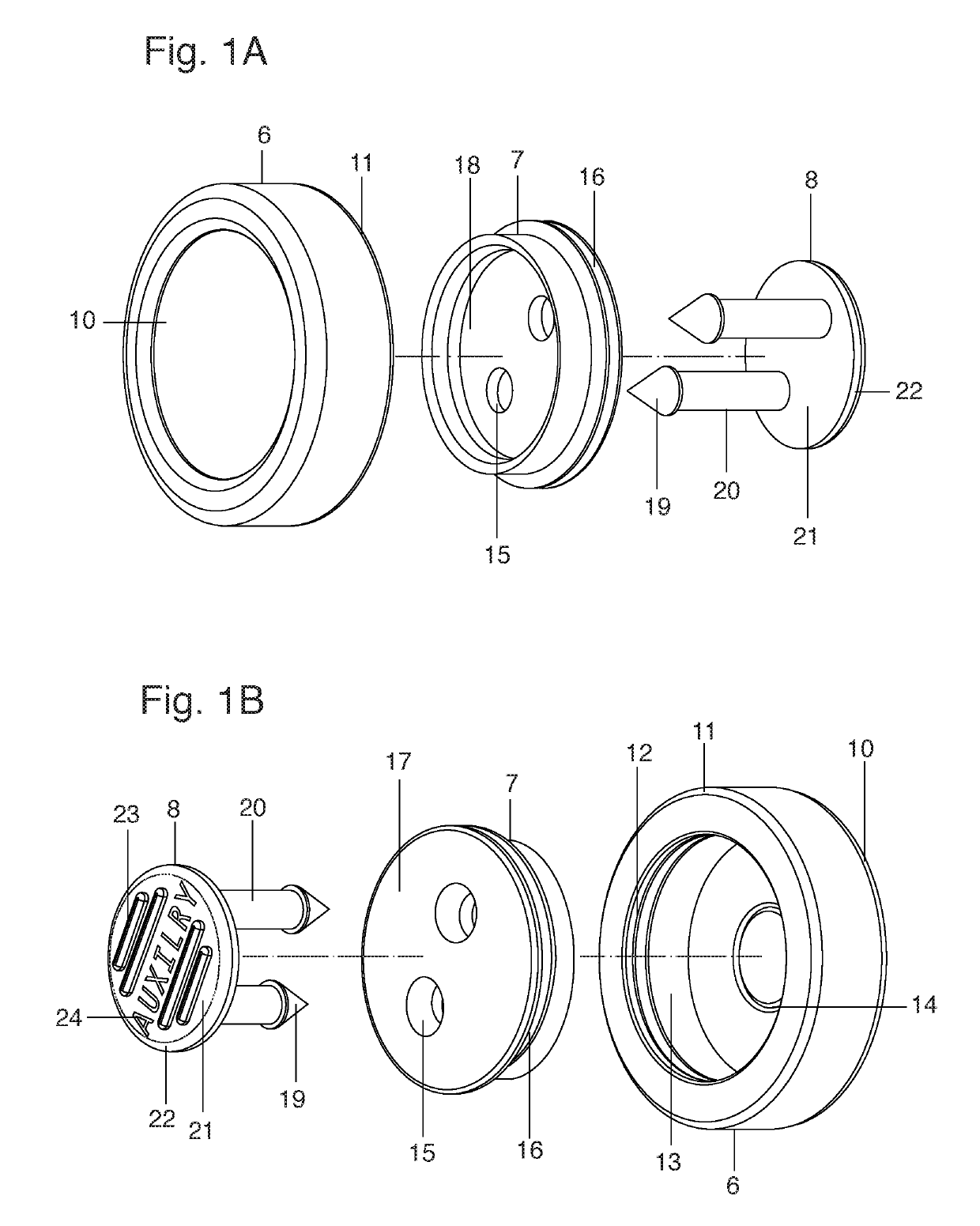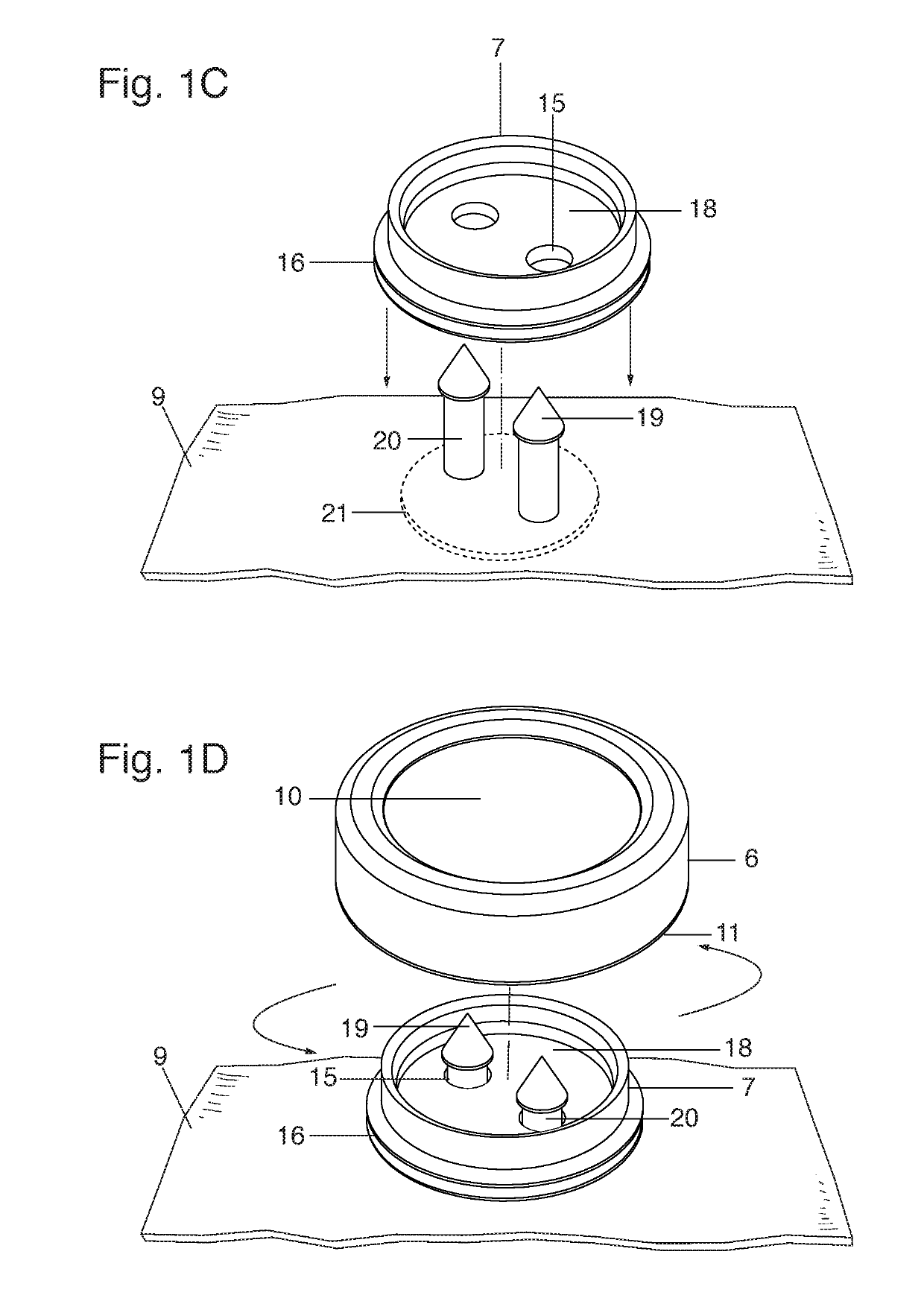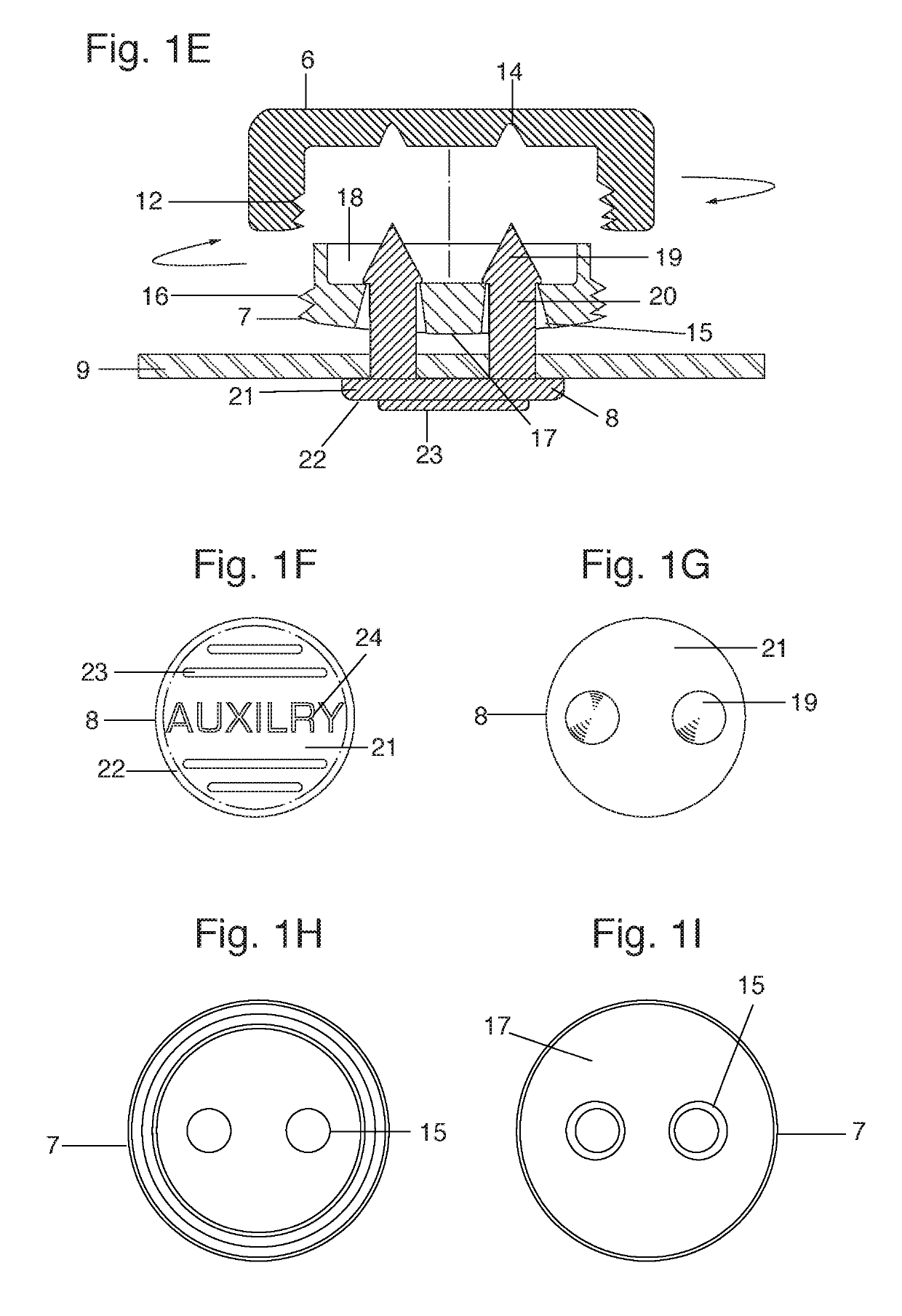Interchangeable button system technology
a button system and interchangeable technology, applied in the field of interchangeable button systems, can solve the problems of time-consuming and fabric-deterioration tasks, the problem of not being able to solve the problems in combination or without the use of special tools, and the difficulty of sewing a button correctly onto a shirt. to achieve the effect of quick interchangeability
- Summary
- Abstract
- Description
- Claims
- Application Information
AI Technical Summary
Benefits of technology
Problems solved by technology
Method used
Image
Examples
first embodiment
[0047]FIGS. 1A-1K shows an interchangeable button system of the present invention. The interchangeable button system has an interchangeable cap 6, a base button 7 and a pronged fastener 8.
[0048]The interchangeable cap 6 is the main visible part of a button assembly that registers with an external base thread 16 on base button 7, interlocking the two parts. The interchangeable cap 6 is the main visible part of a button assembly that allows a user a wide selection of different designs, materials and / or functions. Although interchangeable cap 6 shown in the preferred embodiment is relatively simple in design, its appearance can greatly be varied without departing from the teachings of the present invention. For example, interchangeable cap 6 can be contoured to replicate a traditional sewn on button design for fashion purposes. Similarly, interchangeable cap face 10 can be coated with reflective material for use as a removable safety function in hazardous situations. Interchangeable ca...
second embodiment
[0057]FIG. 2C is a lateral cross-sectional view of the present invention with the interchangeable cap 6 and button base 7 attached to fabric 9 by prong fastener 8. The interchangeable cap 6 and locking pin or protrusion 26 are tightened and secured to button base 7. Further shown are arrows indicating the rotational tightening motion of interchangeable cap 6 in synchronization with the projected path of locking pin 26 along helical track 25. The locking position of the interchangeable cap 6 is achieved when locking pin 26 slides along edge of helical track 25 registering into locking groove 34 (also seen in FIG. 2B). It should be noted that that the prongs tips 19 are not shown in this figure for clarity purposes.
third embodiment
[0058]FIG. 3A-3C shows an interchangeable button system of a
[0059]In this embodiment, a cap member 27 of the interchangeable cap 6 has a chamfered flange 28 with non-slip teeth 30. Non-slip teeth 30 are used in combination with interchangeable cap 6 to prevent internal spinning of cap member 27 from excessive torque or constant interchange use. The cap member 27 also has internal cap member threads 29 that securely fastens counterpart internal cap thread 12 on base button 7.
[0060]The interchangeable button system of the third embodiment may be used when various materials are to be used for interchangeable cap 6 that are different from cap member 27.
PUM
 Login to View More
Login to View More Abstract
Description
Claims
Application Information
 Login to View More
Login to View More - R&D
- Intellectual Property
- Life Sciences
- Materials
- Tech Scout
- Unparalleled Data Quality
- Higher Quality Content
- 60% Fewer Hallucinations
Browse by: Latest US Patents, China's latest patents, Technical Efficacy Thesaurus, Application Domain, Technology Topic, Popular Technical Reports.
© 2025 PatSnap. All rights reserved.Legal|Privacy policy|Modern Slavery Act Transparency Statement|Sitemap|About US| Contact US: help@patsnap.com



